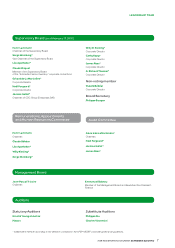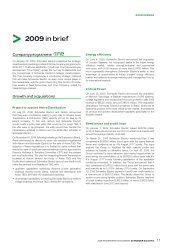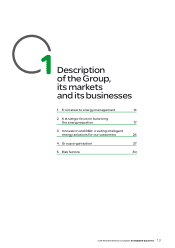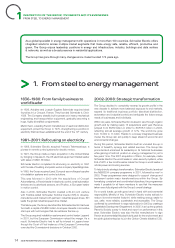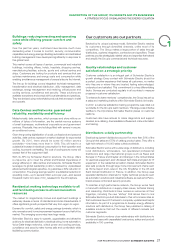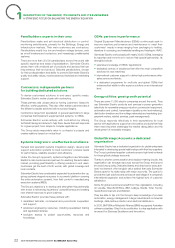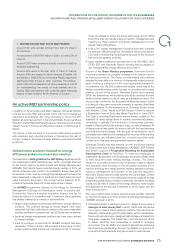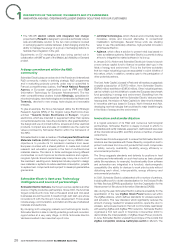APC 2009 Annual Report Download - page 18
Download and view the complete annual report
Please find page 18 of the 2009 APC annual report below. You can navigate through the pages in the report by either clicking on the pages listed below, or by using the keyword search tool below to find specific information within the annual report.
DESCRIPTION OFTHEGROUP, ITSMARKETS ANDITSBUSINESSES
1
2009 REGISTRATION DOCUMENT SCHNEIDER ELECTRIC16
One: Schneider Electric’s new company programme
Schneider Electric has deployed its 2009-2011 company programme , known as One, to drive a
strategy of assertive growth.
A company programme has several missions: s ituate the company in a given economic, social,
cultural and environmental context; define change objectives in line with the company’s strategy;
leverage the right resources to achieve these objectives and stimulate action both inside and outside
the company.
Three
transformations
Customer 1
1 team
solution provider
leader in new
economies
company
1
1
1
Two
fondamentals
Two fundamentals are the cornerstones of Schneider Electric’s
strategic transformation:
•Customer 1: develop customer delight.
•1team: develop people and performance.
To create even greater customer satisfaction, Schneider Electric
has identifi ed three transformation priorities for its new company
programme :
•1 solution provider: Schneider Electric is accelerating its drive to
address end-user needs with customised solutions that deliver
strong energy effi ciency benefi ts, thereby capturing a bigger
part of the value chain. The Group is leveraging its integrated
portfolio of businesses through the use of a common architecture
(EcoStrux ure ), while aligning its organisation with end-user
segmentation.
•1 leader in the new economies: Schneider Electric is further
expanding its global footprint by broadening and deepening its
presence in the new economies, as drivers for long-term growth
and cost competitiveness. The Group is emphasizing local R&D
and marketing to enhance response to local market features and
needs. On the production side, the Group continues to enjoy the
benefi ts of local sourcing and manufacturing.
•1 global company: The pre-requisite for most of our strategic
ambitions is a single, aligned organisation. This means simplifying
support functions to reduce overheads, with the goal of achieving
savings of a structural part of EUR600 million and a component
of adaptation to the crisis up to EUR400 million . It also means
improving industrial productivity. Building on its strong track
record, Schneider Electric is committed to improving supply chain
productivity to drive down costs by a total gross EUR 600million
over three years.
The One company programme ’s objective is to put Schneider
Electric in a position to:
•Achieve an organic growth rate of GDP + 3 points on average
across a normal business cycle.
•Achieve an EBITA margin of between 13% and 16% across a
normal business cycle.
Schneider Electric defines a normal business cycle as a period including a slowdown and an expansion, or a period in between. This concept
allows investors to estimate the Group’s long-term growth potential across a business cycle. The length of a business cycle can vary and cannot be
forecast. The last business cycle, for example, lasted around seven years, beginning with the 2000-2001 recession and ending in 2007-2008. The
current cycle began in 2009 with a recession that is widely considered exceptional in both size and scope. For this reason, Schneider Electric has
excluded 2009 from the concept of “normal business cycle” used to measure its EBITA margin growth potential.



